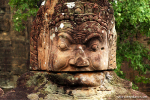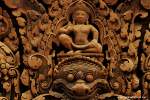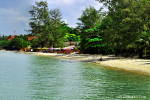Discover the enchanting beauty and rich culture of Laos, a hidden gem in Southeast Asia. From the ancient wonders of Wat Phu and the mystical Plain of Jars to the serene waters of the Mekong River and the vibrant night markets of Luang Prabang, Laos offers a myriad of unforgettable experiences. Whether you're trekking through the lush landscapes of Nong Khiaw, exploring the intricate cave systems of Tham Kong Lo, or immersing yourself in the local culture at the Living Land Farm, this guide will highlight the best things to do in Laos. Prepare to be captivated by this land of stunning scenery, rich history, and warm hospitality.
Explore the Ancient Temples of Luang Prabang
| Essential Facts about Luang Prabang | |
|---|---|
| Location | Northern Laos, confluence of the Mekong and Nam Khan rivers |
| Highlights | Ancient temples, UNESCO World Heritage Site, cultural heritage |
| Best Time to Visit | November to March (cool and dry season) |
| Must-See Temples | Wat Xieng Thong, Wat Mai, Wat Visoun, Wat Aham |
| Activities | Morning alms-giving ceremony, Mekong River cruise, night market |
| How to get there | Flights to Luang Prabang Airport, buses from Vientiane, Pakse, Vang Vieng |
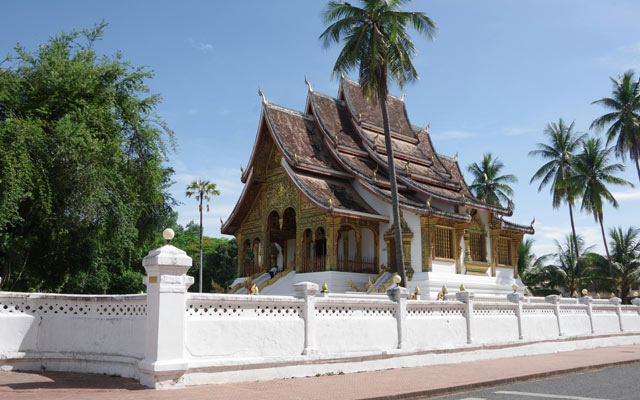
Nestled in the heart of northern Laos, Luang Prabang, also known as Louangphabang, is renowned for its stunning array of ancient temples. This city, a UNESCO World Heritage Site, offers a rich cultural heritage and spiritual significance that attracts travelers from all over the world.
Luang Prabang is located at the confluence of the Mekong and Nam Khan rivers. The city’s highlights include its more than 30 temples, each showcasing the architectural grandeur and spiritual life of Laos. The serene atmosphere of Luang Prabang's temples provides a tranquil escape from daily life, making it an ideal destination for those seeking both cultural immersion and relaxation.
Getting to Luang Prabang
- From Vientiane: Regular flights and buses are available. The bus journey takes around 10-12 hours, while a flight takes approximately 1 hour.
- From Pakse: Direct flights are available, or you can take a bus, which takes about 24 hours.
- From Vang Vieng: Buses and minivans are available, with the journey taking about 6-7 hours.
Laos Express Train
The Laos-China Railway, also known as the Boten-Vientiane Railway, connects Vientiane (the capital of Laos) to Luang Prabang, a charming former royal capital. Here are some key details:
- Train Name: The first passenger bullet train, named Lane Xang, runs along this railway. It was delivered to Laotian operators in Vientiane in October 2021. The train can reach speeds of up to 160 kilometers per hour.
- Route and Scenery: The 422-kilometer railway cuts through rugged, mountainous landscapes, passing through 75 tunnels and over 167 bridges and viaducts. It’s a scenic journey!
- Travel Time: The train ride between Vientiane and Luang Prabang takes just over two hours, making it a convenient way to explore both cities.
- Tourist Attractions: While in Luang Prabang, consider visiting attractions like Tad Sae Waterfall (reachable by boat) and Mount Phousi (offering incredible 360-degree views).
- Future Extensions: The railway is part of the Kunming–Singapore Railway network, and an extension to Bangkok is under construction (scheduled for completion in 2028).
To get to Luang Prabang by train, take the Laos-China Railway from Vientiane, which is the primary station for this scenic journey. Additionally, you can board the train to Luang Prabang from other stations:
- Vientiane: The primary station for this scenic journey.
- Vang Vieng: An intermediate stop.
- Luang Prabang: Your destination!
- Muang Xay: Another intermediate station.
- Na Teuy: A brief stop.
- Boten: The northernmost point of the railway, near the Laos-China border.
Remember, Vientiane station is about 14 kilometers from central Vientiane, while Luang Prabang station is approximately 12 kilometers from the city center.
Luang Prabang offers a range of accommodation options to suit all budgets:
- Hostels: Budget-friendly options like Khammany Inn Hostel and Central Backpackers Hostel.
- Hotels: Mid-range options such as My Dream Boutique Resort and Luang Prabang Legend Hotel.
- Resorts: Luxurious stays at places like Avani+ Luang Prabang and Sofitel Luang Prabang.
The best time to visit Luang Prabang is from November to March, during the cool and dry season. This period offers pleasant weather, making it ideal for exploring the city and its surroundings.
Top Activities and Things to Do in Luang Prabang
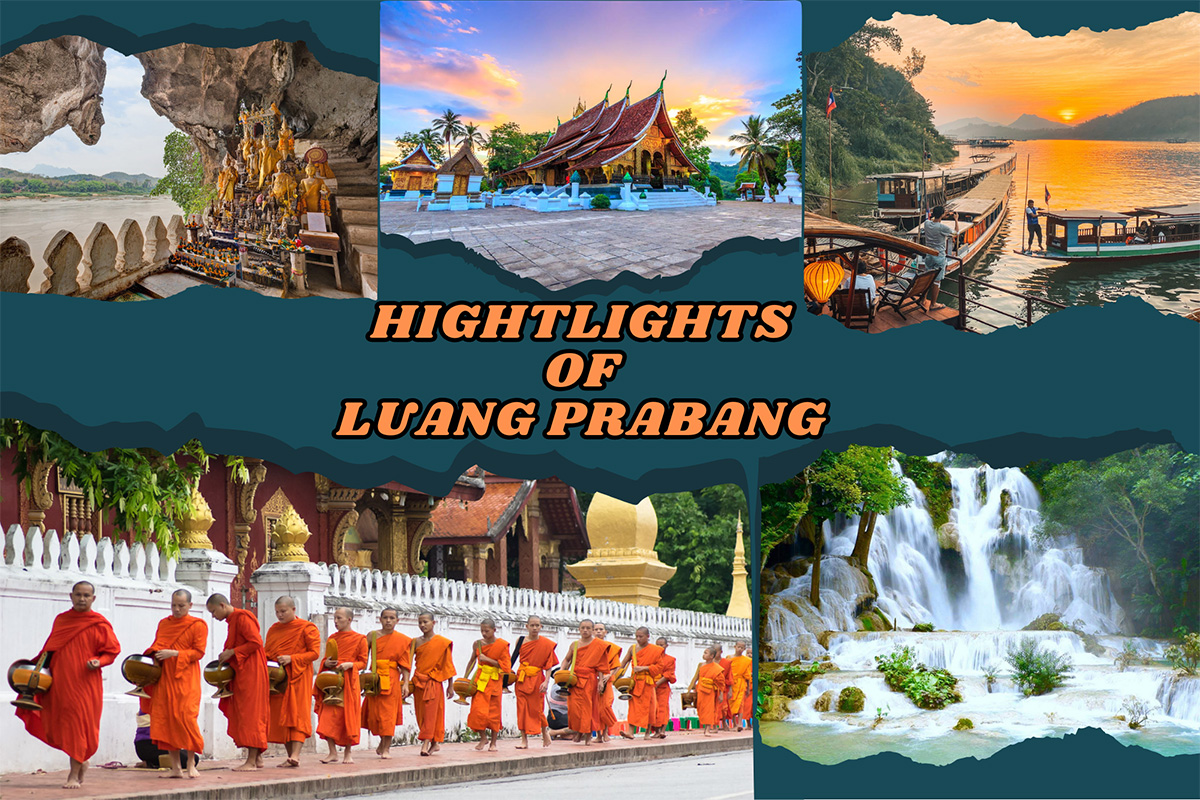
Here are some of the top activities and things to do in Luang Prabang:
1. Explore the Temples
- Wat Xieng Thong: Known as the Golden City Temple, it's one of the most important monasteries in Laos, showcasing exquisite architecture and intricate mosaics.
- Wat Mai Suwannaphumaham: Famous for its impressive five-tiered roof and elaborate gold bas-relief.
- Wat Visoun: The oldest operating temple in Luang Prabang, featuring a unique watermelon stupa.
2. Visit the Royal Palace Museum
- Once the royal residence, this museum offers a glimpse into Laos' royal history and houses a collection of royal artifacts, including the Prabang Buddha statue.
3. Climb Mount Phousi
- A popular spot for panoramic views of the city and the Mekong River. The climb involves 328 steps and offers stunning sunrise and sunset vistas.
4. Kuang Si Waterfall
- A multi-tiered waterfall with turquoise blue pools perfect for swimming. There’s also a bear rescue center near the falls.
5. Take a Mekong River Cruise
- Enjoy a scenic boat ride along the Mekong River. You can opt for a sunset cruise or a day trip to the Pak Ou Caves, famous for their thousands of Buddha statues.
6. Morning Alms Giving Ceremony (Tak Bat)
- Witness the serene and respectful ritual of monks collecting alms from locals at dawn. It’s a significant cultural experience, and visitors are encouraged to participate respectfully.
7. Visit the Night Market
- Held on Sisavangvong Road, this market is perfect for buying local handicrafts, textiles, and sampling street food.
8. Explore the Traditional Arts and Ethnology Centre (TAEC)
- Learn about the diverse ethnic groups of Laos through exhibits showcasing traditional clothing, tools, and artifacts.
9. Cooking Classes
- Join a cooking class to learn how to prepare traditional Lao dishes using fresh local ingredients.
10. Biking and Trekking Tours
- Discover the rural landscapes, rice paddies, and remote villages around Luang Prabang on a bike or trekking tour.
11. Visit the Pak Ou Caves
- Located at the confluence of the Mekong and Nam Ou rivers, these caves are filled with thousands of Buddha images of various styles and sizes.
12. Enjoy Traditional Lao Massage and Spa Treatments
- Relax and unwind with a traditional Lao massage or a spa treatment at one of the many wellness centers in the city.
13. Experience the Bamboo Bridge
- Depending on the season, cross the Nam Khan River on a traditional bamboo bridge that is rebuilt every year after the rainy season.
14. Discover the Ock Pop Tok Living Crafts Centre
- An organization dedicated to preserving traditional Lao weaving and textiles. Take a tour, join a workshop, or shop for beautiful handmade items.
15. Visit the Butterfly Park
- Located near Kuang Si Waterfall, this park is home to numerous species of butterflies and offers educational tours.
16. Explore Local Villages
- Visit nearby villages to experience local culture and traditions. Ban Xang Hai (Whiskey Village) and Ban Phanom (Weaving Village) are popular choices.
17. Enjoy Riverside Dining
- Numerous restaurants and cafes along the Mekong River offer delicious Lao cuisine with stunning river views.
Must-See Temples in Luang Prabang
Wat Xieng Thong
Wat Xieng Thong, often referred to as the "Temple of the Golden City," is one of the most important and beautiful monasteries in Laos. Built in 1560 by King Setthathirath, this temple exemplifies classic Luang Prabang temple architecture with its sweeping two-tiered roof and ornate decorations.
Highlights
- The Tree of Life Mosaic: A stunning glass mosaic on the rear wall of the ordination hall, depicting the Tree of Life.
- Funerary Carriage Hall: Houses the royal funeral carriage and urns for members of the royal family.
- Exquisite Decorations: Intricate carvings, gold stenciling, and colorful glass mosaics adorn the temple.
Wat Mai Suwannaphumaham
Wat Mai, or the "New Monastery," is a large temple complex built in the late 18th century. It served as the residence of the highest Laotian Buddhist dignitary and is known for its grandeur and extensive use of gold.
Highlights
- Golden Bas-Reliefs: The temple’s front veranda features intricate bas-reliefs depicting scenes from the Ramayana and daily life in Luang Prabang.
- Pha Bang Buddha: A revered Buddha statue that was once housed here and is now in the Royal Palace Museum.
- Buddhist Festivals: Wat Mai is a central location for important Buddhist festivals, including the Lao New Year (Pi Mai).
Wat Wisunarat
Wat Wisunarat, also known as Wat Visoun, is the oldest temple in Luang Prabang, originally built in 1512 during the reign of King Wisunarat. The temple has been reconstructed several times due to invasions and fires.
Highlights
- That Makmo (Watermelon Stupa): A uniquely shaped stupa that resembles a watermelon, located in the temple grounds.
- Wooden Buddha Images: The temple houses an impressive collection of ancient wooden Buddha images.
- Historical Significance: As the oldest temple, Wat Wisunarat offers insights into the early religious architecture of Luang Prabang.
Wat Phon Phao
Located on a hilltop outside the city center, Wat Phon Phao is known for its serene atmosphere and panoramic views of Luang Prabang. The temple was constructed in the late 20th century and serves as a meditation retreat.
Highlights
- Panoramic Views: The temple’s location offers stunning views of the surrounding landscape, especially at sunrise and sunset.
- Meditation Retreats: Wat Phon Phao is a center for meditation, attracting both locals and tourists seeking spiritual rejuvenation.
- Unique Architecture: The temple’s octagonal shape and vibrant murals depicting Buddhist teachings make it a unique site.
Tips for Visiting temples in Luang Prabang
- Dress Appropriately: Ensure your shoulders and knees are covered when visiting temples.
- Respectful Behavior: Maintain a quiet and respectful demeanor, especially during prayer times.
- Best Time to Visit: Early morning visits can offer a peaceful experience before the crowds arrive.
Exploring the ancient temples of Luang Prabang is a journey through Laos’ spiritual and historical heritage. Each temple tells a unique story through its architecture, decorations, and the sacred relics it houses. Whether you are a history buff, a spiritual seeker, or simply a curious traveler, the temples of Luang Prabang offer a profound and enriching experience.
Sample Luang Prabang Itinerary 4-Day
For a fulfilling experience in Luang Prabang, a stay of 3 to 4 days is recommended. This allows you to explore the key attractions, immerse yourself in the local culture, and enjoy some leisure time. Here's a suggested itinerary:
Day 1: Arrival and Initial Exploration
- Morning: Arrive in Luang Prabang, check into your accommodation.
- Afternoon: Visit the Royal Palace Museum to learn about Lao history and culture.
- Evening: Stroll through the Luang Prabang Night Market for souvenirs and local food.
Day 2: Temple Tour
- Morning: Explore Wat Xieng Thong, the most famous temple in Luang Prabang.
- Midday: Visit Wat Mai and Wat Visoun.
- Afternoon: Take a break at one of the many charming cafes or riverside restaurants.
- Evening: Watch the sunset from Mount Phousi, offering panoramic views of the city.
Day 3: Cultural Immersion
- Morning: Participate in or observe the morning alms-giving ceremony.
- Late Morning: Visit the Traditional Arts and Ethnology Centre to understand local ethnic groups.
- Afternoon: Take a boat trip on the Mekong River, possibly visiting the Pak Ou Caves.
- Evening: Enjoy a traditional Lao dance performance.
Day 4: Leisure and Departure
- Morning: Relax at Kuang Si Waterfalls, a short drive from the city, where you can swim and explore the beautiful surroundings.
- Afternoon: Return to Luang Prabang for a leisurely lunch and some final sightseeing or shopping.
- Evening: Depart for your next destination.
Extended Stay Options:
If you have more time, consider staying for 5 to 7 days. This would allow you to:
- Take a cooking class to learn how to make traditional Lao dishes.
- Explore nearby villages and interact with local communities.
- Enjoy more leisure activities like yoga retreats, spa treatments, or additional day trips to nearby attractions.
With a well-planned itinerary, your stay in Luang Prabang can be both enriching and relaxing, giving you ample time to appreciate its cultural treasures and natural beauty.
Practical Tips for Travelers:
- Weather: Plan your visit during the cool and dry season (November to March) for the best weather.
- Transport: Renting a bicycle or scooter can be a convenient way to explore the city at your own pace.
- Accommodation: Book your stay in advance, especially during peak tourist seasons, to ensure you get the best options.
- Dress Modestly: Cover shoulders and knees when visiting temples as a sign of respect.
- Local Etiquette: Be respectful during religious ceremonies and always ask for permission before taking photographs of monks or locals.
- Currency: The local currency is Lao Kip, but US dollars and Thai Baht are widely accepted.
With its ancient temples, rich cultural heritage, and serene atmosphere, Luang Prabang offers a unique and enriching travel experience. Whether you're exploring the architectural beauty of its temples or engaging in local traditions, a well-planned trip to Luang Prabang will leave you with unforgettable memories.
Discover the Mysteries of the Plain of Jars
| Fact | Details |
|---|---|
| Location | Xiangkhouang Plateau, Laos |
| Closest Town | Phonsavan |
| Nearest Airports | Xieng Khouang Airport (XKH) |
| Best Time to Visit | November to March |
| Main Attractions | Megalithic stone jars, Site 1, Site 2, Site 3 |
| Accommodation Options | Hotels, Guesthouses, Hostels |
The Plain of Jars is one of the most enigmatic and fascinating archaeological sites in Southeast Asia. Nestled in the Xiangkhouang Plateau of northern Laos, this area is dotted with thousands of large stone jars scattered across the landscape. These jars, some weighing several tons, date back to the Iron Age (500 BCE to 500 CE) and continue to baffle archaeologists with their mysterious origins and purposes.
Highlights of the Plain of Jars
The primary allure of the Plain of Jars lies in its megalithic stone jars, which vary in size and shape, some reaching up to 3 meters in height. The jars are spread across several sites, with Sites 1, 2, and 3 being the most accessible and frequently visited. Each site offers a unique perspective on this ancient mystery, with Site 1 being the largest and most extensively excavated.
How to Get to the Plain of Jars
From Pakse:
- By Air: Fly from Pakse International Airport (PKZ) to Vientiane and then take a connecting flight to Xieng Khouang Airport (XKH).
- By Bus: Long-distance buses are available, but the journey can be long and bumpy, often taking over 24 hours.
From Luang Prabang:
- By Air: Direct flights from Luang Prabang to Xieng Khouang Airport are available.
- By Bus: Buses and minivans run regularly, taking about 7-10 hours.
From Vientiane:
- By Air: Direct flights from Wattay International Airport (VTE) to Xieng Khouang Airport.
- By Bus: Buses and minivans operate daily, with the journey lasting around 10-12 hours.
Where to Stay in the Plain of Jars
Phonsavan, the nearest town to the Plain of Jars, offers a range of accommodation options:
Hotels:
- Vansana Plain of Jars Hotel: Comfortable rooms with modern amenities and an on-site restaurant.
- Auberge Phouphadeng Hotel: Offers charming bungalows with beautiful garden views.
Guesthouses:
- Jennida Guesthouse: Budget-friendly with clean rooms and friendly staff.
- Nice Guesthouse: Centrally located with basic amenities.
Hostels:
- Sabaidee Guesthouse: Popular with backpackers, offering dormitory-style accommodation and private rooms.
Best Time to Visit the Plain of Jars
The ideal time to visit the Plain of Jars is from November to March when the weather is cool and dry. During this period, the temperatures are pleasant, and the risk of rain is minimal, making it perfect for exploring the sites.
Best Activities and Things to Do in the Plain of Jars
- Explore the Jar Sites:
- Site 1: The largest and most popular site, featuring over 300 jars and an informative visitor center.
- Site 2: Offers a more intimate experience with fewer visitors and a scenic forest setting.
- Site 3: Located on a hilltop, providing panoramic views of the surrounding countryside.
- Visit the MAG Visitor Center:
- Learn about the efforts to clear unexploded ordnance (UXO) from the area and the impact of the Vietnam War on Laos.
- Discover Local Culture:
- Visit traditional Hmong and Tai Dam villages to experience local customs, crafts, and cuisine.
- Explore the Phou Keng Quarry:
- See where the stone jars were believed to have been carved before being transported to their current locations.
- Take a Scenic Drive:
- The surrounding landscape of the Xiangkhouang Plateau is stunning, with rolling hills, limestone cliffs, and lush greenery.
The Plain of Jars offers a unique blend of mystery, history, and natural beauty, making it a must-visit destination for adventurous travelers and history enthusiasts alike. Whether you're marveling at the ancient stone jars, learning about local culture, or simply soaking in the stunning landscapes, a trip to the Plain of Jars promises to be an unforgettable experience.
Visit Si Phan Don, a laid-back archipelago in southern Laos
| Fact | Details |
|---|---|
| Other Name | Four Thousand Islands |
| Location | Southern Laos, in the Mekong River |
| Nearest Major City | Pakse |
| Known For | Waterfalls, serene landscapes, river activities |
| Best Time to Visit | November to March |
| Main Islands | Don Det, Don Khon, Don Khong |
Si Phan Don, also known as the Four Thousand Islands, is a serene and picturesque archipelago in southern Laos. Nestled in the Mekong River, this collection of islands offers a perfect blend of natural beauty, tranquility, and cultural richness. Whether you're looking to unwind in a hammock by the river, explore stunning waterfalls, or delve into local Laotian culture, Si Phan Don is a must-visit destination for any traveler.
Si Phan Don is located in the Champasak Province of southern Laos. It is an archipelago in the Mekong River, near the border with Cambodia. The region is renowned for its laid-back atmosphere, making it an ideal spot for travelers seeking relaxation and natural beauty.
The primary highlights of Si Phan Don include:
- Stunning Waterfalls: The Khone Phapheng Falls, the largest waterfall in Southeast Asia by volume, and the Li Phi Falls, also known as the Spirit Falls.
- Rich Wildlife: Spot the rare Irrawaddy dolphins near Don Khon.
- Cultural Heritage: Explore ancient temples and French colonial architecture.
- Peaceful Scenery: Enjoy the tranquil river views and lush green landscapes.
How to Get to Si Phan Don
From Pakse:
- By Bus: Buses and minibuses frequently travel from Pakse to Nakasong, the nearest mainland town. From Nakasong, take a boat to the islands.
- By Private Transfer: Taxis or private cars can also be arranged for a more comfortable journey.
From Luang Prabang:
- By Air: Fly to Pakse and then follow the travel instructions from Pakse.
- By Bus: Long-distance buses travel from Luang Prabang to Pakse, and then a transfer to Si Phan Don is required.
From Vientiane:
- By Air: Direct flights to Pakse, followed by land and boat transfers.
- By Bus: Overnight buses run from Vientiane to Pakse, after which you can transfer to Si Phan Don.
Where to Stay in Si Phan Don
Accommodation options in Si Phan Don range from budget hostels to mid-range hotels and a few upscale resorts. Popular choices include:
- Hostels: Many budget-friendly hostels are available on Don Det, ideal for backpackers.
- Hotels: Don Khong offers several mid-range hotels with comfortable amenities.
- Resorts: For a more luxurious stay, consider the Mekong Riverside Resort on Don Khong.
Best Time to Visit Si Phan Don
The best time to visit Si Phan Don is during the dry season, from November to March. During this period, the weather is cooler and more pleasant, making it ideal for exploring the outdoors. The rainy season, from June to October, can make travel more challenging due to higher water levels and potential flooding.
Best Activities and Things to Do in Si Phan Don
- Explore the Waterfalls:
- Khone Phapheng Falls: Witness the power of Southeast Asia's largest waterfall.
- Li Phi Falls: Also known as the Spirit Falls, they offer breathtaking views.
- Spot the Irrawaddy Dolphins:
- Take a boat trip near Don Khon to see these rare freshwater dolphins.
- Relax on Don Det:
- Enjoy the laid-back vibe with riverside hammocks, tubing, and cycling around the island.
- Visit Historical Sites:
- Explore ancient temples and remnants of the French colonial railway on Don Khon.
- Kayaking and Boating:
- Rent a kayak to navigate the Mekong River and its smaller tributaries.
- Local Cuisine:
- Sample delicious Laotian dishes at local eateries and riverside restaurants.
Si Phan Don is a hidden gem in southern Laos, offering a perfect blend of natural beauty, cultural experiences, and a relaxed atmosphere. Whether you're an adventurous traveler or someone looking to unwind, this archipelago has something for everyone. Plan your trip to Si Phan Don to experience the charm and tranquility of the Four Thousand Islands.
Experience the Beauty of Kuang Si Waterfalls
Nestled in the verdant hills of Luang Prabang, Kuang Si Waterfalls is a must-visit destination that promises an unforgettable experience for travelers to Laos. The journey to Kuang Si Waterfalls from Luang Prabang is an adventure in itself, with options ranging from guided tours to self-guided treks. As you explore the lush surroundings, the sound of cascading water grows louder, leading you to the breathtaking sight of the multi-tiered falls.
For those wondering "is Kuang Si Waterfalls worth visiting," the answer is a resounding yes. The falls are not just a visual feast; they offer a variety of activities to suit every traveler. You can take a refreshing dip in the turquoise pools, perfect for swimming in Kuang Si Falls, or embark on a scenic Kuang Si Falls hike to the top for panoramic views. Families will find Kuang Si Waterfalls with kids a delightful experience, thanks to the safe and accessible paths.
Planning your visit involves considering practical details such as the Kuang Si Waterfalls entrance fee, which is modest and contributes to the preservation of this natural wonder. The best time to visit Kuang Si Waterfalls is during the dry season, from November to April, when the weather is ideal for exploring.
When it comes to "what to wear at Kuang Si Waterfalls," lightweight and quick-drying clothing is recommended, along with sturdy footwear for hiking. Tours to Kuang Si Waterfalls from Luang Prabang are plentiful, catering to various preferences and budgets, ensuring everyone can enjoy this natural marvel. Whether you're looking for a peaceful retreat or an adventurous outing, Kuang Si Waterfalls Luang Prabang offers an enchanting escape into nature's splendor.
Take a Spiritual Journey at Wat Phu
One of the top things to do in Laos is taking a spiritual journey at Wat Phu, an ancient Hindu temple complex nestled in the Champasak Cultural Landscape. This UNESCO World Heritage Site offers a deep dive into the rich history and architectural grandeur of the Khmer Empire. Situated on the slopes of Phou Kao mountain, Wat Phu is not just a site of worship but a testament to the intricate Khmer Empire architecture that dates back to the 5th century.
Exploring Wat Phou, visitors can marvel at the detailed carvings and relics that tell tales of the site's significance over centuries. As you wander through this historical marvel, you'll understand why it's a must-visit on any Laos temple tour. The tranquil surroundings and the historical essence make it a perfect spot for those interested in the Hindu temples of Southeast Asia. In addition to the spiritual ambiance, the breathtaking views from the temple complex enhance the overall experience, making it one of the most memorable things to do in Champasak.
For travelers looking to combine their visit with other attractions, a trip to the nearby Kuang Si Waterfalls provides a refreshing contrast to the historical exploration of Wat Phou. Don't miss out on learning about Wat Phou's history and enjoying the serene beauty that has drawn visitors from around the world.
Embrace Adventure with Trekking in Nong Khiaw
Embrace adventure with trekking in Nong Khiaw, a hidden gem nestled in the heart of Laos. This charming village offers a plethora of trekking opportunities, perfect for both beginners and seasoned hikers. Nong Khiaw trekking tours are renowned for their breathtaking scenery and immersive cultural experiences. Whether you’re embarking on a short Nong Khiaw day trek or a more challenging multi-day expedition, you’ll find yourself surrounded by lush landscapes and vibrant local life.
The scenic treks of Nong Khiaw lead you through serene valleys, dense jungles, and along the majestic Nam Ou River, providing countless photo-worthy moments. For those new to trekking, beginner treks in Nong Khiaw are the ideal introduction, offering manageable trails that still deliver stunning views. Opt for a Nong Khiaw homestay trek to explore the countryside and connect with local communities, gaining insights into traditional Lao culture.
Trekking in Nong Khiaw truly encapsulates the spirit of Laos adventure travel, making it one of the best things to do in Nong Khiaw. So, pack your hiking boots and set off on an unforgettable journey through this picturesque paradise.
Motorbiking in the Thakhek Loop
Exploring the Thakhek Loop by motorbike is an exhilarating adventure and a must-do for travelers seeking an authentic Laos experience. The Thakhek motorbike loop offers a 450-kilometer journey through some of the most stunning landscapes in the country, perfect for those craving an adrenaline rush and a taste of rural Laos. Starting from Thakhek, this loop takes you through breathtaking limestone karsts, hidden caves, and charming villages.
The best time to visit the Thakhek Loop is during the dry season, from November to April, when the weather is ideal for riding. Riders can easily find Thakhek Loop scooter rentals in the town, making it accessible for both seasoned adventurers and beginners.
To help navigate, a Thakhek Loop map is essential, and many accommodations along the route cater to backpackers, ensuring a comfortable stay each night.
Whether you're planning a detailed Thakhek Loop itinerary or looking for spontaneous adventure, this motorbike loop promises an unforgettable journey. Don’t miss the chance to experience Laos motorbike adventure at its finest with the Thakhek Loop.
Overview of the Thakhek Loop
- Distance: Approximately 450 kilometers
- Duration: 3-5 days, depending on your pace and the number of stops
- Best Time to Visit: November to March (dry season)
Key Highlights and Attractions
- Thakhek Town: Start your journey in Thakhek, a charming town along the Mekong River. Rent a motorbike from one of the many rental shops here.
- Kong Lor Cave: One of the main highlights, this 7.5-kilometer-long cave is navigable by boat. It's an impressive natural wonder you shouldn’t miss.
- Tham Nang Aen Cave: Another beautiful cave, known for its stalactites and stalagmites. It's well-lit and easy to explore.
- The Limestone Karst Mountains: The rugged landscape provides a dramatic backdrop for your ride, with numerous viewpoints and photo opportunities.
- Cool Springs: Take a refreshing dip in one of the many natural springs along the route. Some popular ones include Tha Falang and Cool Pool.
- Local Villages: Experience the local culture by stopping at villages along the way. The friendly locals often invite travelers to learn about their way of life.
- Tad Namsanam Waterfall: A beautiful waterfall that’s a perfect spot for a break and some relaxation.
- Scenic Roads: The roads offer a mix of paved and unpaved sections, with plenty of twists and turns to keep the ride exciting.
Tips for the Journey
- Motorbike Rental: Ensure you rent a reliable bike from a reputable shop. Check the bike thoroughly before setting off.
- Safety Gear: Always wear a helmet and protective clothing. The roads can be unpredictable, and safety should be your priority.
- Navigation: Carry a map or download offline maps on your phone. The route is generally well-marked, but it’s good to have a backup.
- Accommodation: There are guesthouses and homestays along the route. It’s advisable to book in advance during peak season.
- Fuel: Fill up your tank whenever you can. Gas stations can be sparse in some parts of the loop.
- Packing Essentials: Bring a first aid kit, basic repair tools, a flashlight, and sufficient water and snacks.
Ideal 3-Day Thakhek Loop Itinerary by Motorbike
Day 1: Thakhek to Thalang
- Start early from Thakhek
- Visit Tham Nang Aen Cave
- Overnight in Thalang
Day 2: Thalang to Kong Lor
- Ride through stunning karst landscapes
- Explore Kong Lor Cave
- Overnight in Kong Lor
Day 3: Kong Lor to Thakhek
- Visit the cool springs and local villages
- Return to Thakhek by evening
Motorbiking the Thakhek Loop is a thrilling and rewarding adventure, offering a mix of natural beauty, cultural experiences, and the joy of riding through diverse landscapes. Prepare well, ride safely, and enjoy the journey through one of Laos’ most scenic routes.
Off the Beaten Track Places in Laos
Here are some off-the-beaten-track places in Laos that offer unique experiences away from the usual tourist spots:
- Kong Lor Caves:
- Located in central Laos, the Kong Lor Caves stretch 7 kilometers through the Phu Hin Boun Conservation Area. Visitors can take a longtail boat through the cave's teal waters, experiencing the eerie silence and darkness punctuated only by the beams of their head torches. This area is known for its stunning natural beauty and adventure opportunities.
- Bolaven Plateau:
- This region is known for its coffee plantations, serene villages, and numerous waterfalls. It’s ideal for those who enjoy motorbike tours and hiking. Popular waterfalls include Itou Falls, Tad Yuang, and Tad Fane. The Bolaven Plateau also offers cultural experiences, such as visiting minority villages to learn about local customs and lifestyles.
- Champasak:
- Home to the ancient Khmer temple complex of Wat Phou, a UNESCO World Heritage site, Champasak provides a tranquil retreat with historical significance. It’s less crowded and allows for a more relaxed exploration of Laos' cultural heritage.
- Nam Et-Phou Louey National Protected Area:
- Located in the northeast, this area offers opportunities to see Laos' wildlife, including gibbons, bears, and various bird species. Visitors can enjoy trekking, wildlife tracking, and even night-time wildlife spotting. It’s a great destination for eco-tourism and those interested in conservation efforts.
- Nong Khiaw:
- This small town is surrounded by stunning limestone mountains and lush forests, making it a perfect spot for nature lovers. Activities include hiking, enjoying traditional herbal saunas, and soaking in the serene landscape. Nong Khiaw offers a peaceful escape with plenty of outdoor activities.
- Xe Bang Fai River Cave:
- Known as one of the largest river caves in the world, the Xe Bang Fai River Cave is an 11-kilometer-long cave system that offers a unique exploration experience by longtail boat. The cave features impressive stalactites and stalagmites, and its vast chambers are a sight to behold.
These destinations provide a mix of natural beauty, adventure, and cultural experiences that showcase the less-traveled side of Laos, making them ideal for those looking to explore beyond the typical tourist trails.
Conclusion
Laos is a treasure trove of unforgettable experiences, blending natural beauty, rich culture, and hidden gems waiting to be discovered. From the serene temples of Luang Prabang and the bustling markets of Vientiane to the breathtaking landscapes of the Bolaven Plateau and the mysterious Plain of Jars, the best things to do in Laos cater to every type of traveler. Whether you're an adventure seeker, history buff, or simply looking to immerse yourself in a new culture, Laos offers a unique blend of attractions that promise to leave a lasting impression.
Explore the hidden wonders of the Nam Et-Phou Louey National Park, kayak through the serene waters of Si Phan Don (4000 Islands), or delve into the vibrant nightlife of Vang Vieng. Don't miss out on the chance to discover the lesser-known yet equally captivating sites such as the Kong Lor Cave and the Vieng Xai Caves, which offer a glimpse into the country's fascinating past.
Ready to embark on your Lao adventure? Dive into our comprehensive guide to uncover the top attractions and hidden gems of this enchanting country. Plan your trip today and experience the magic of Laos for yourself. Don't forget to share your journey with us by tagging us on social media using #BestThingsToDoInLaos, #AsiaTravelandLeisure, #LaosTravel, #LaosTourism.
For more travel tips, detailed itineraries, and insider secrets, sign up for our newsletter and ensure you don’t miss out on any updates. Your adventure in Laos awaits!




